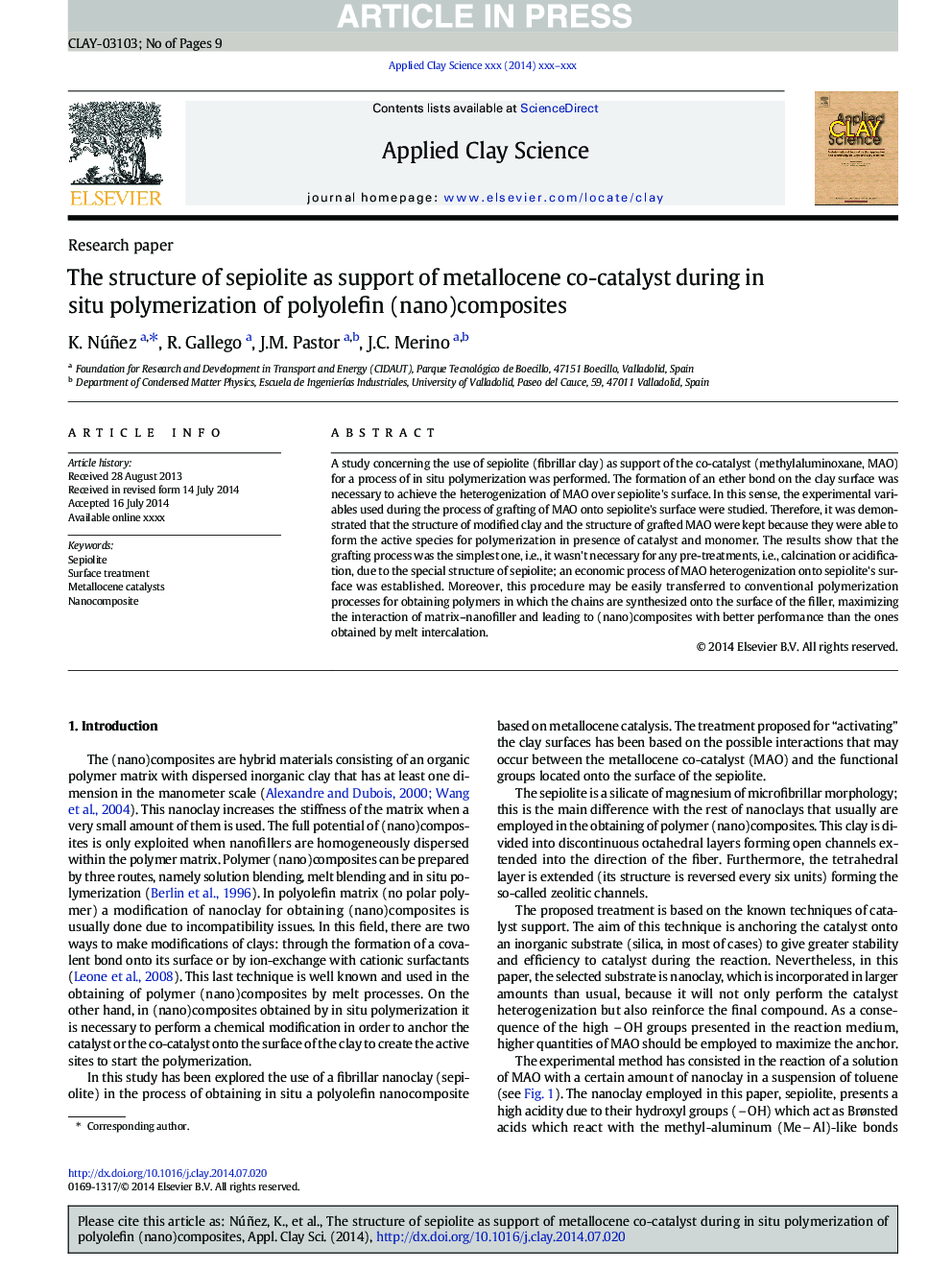| Article ID | Journal | Published Year | Pages | File Type |
|---|---|---|---|---|
| 8046755 | Applied Clay Science | 2014 | 9 Pages |
Abstract
A study concerning the use of sepiolite (fibrillar clay) as support of the co-catalyst (methylaluminoxane, MAO) for a process of in situ polymerization was performed. The formation of an ether bond on the clay surface was necessary to achieve the heterogenization of MAO over sepiolite's surface. In this sense, the experimental variables used during the process of grafting of MAO onto sepiolite's surface were studied. Therefore, it was demonstrated that the structure of modified clay and the structure of grafted MAO were kept because they were able to form the active species for polymerization in presence of catalyst and monomer. The results show that the grafting process was the simplest one, i.e., it wasn't necessary for any pre-treatments, i.e., calcination or acidification, due to the special structure of sepiolite; an economic process of MAO heterogenization onto sepiolite's surface was established. Moreover, this procedure may be easily transferred to conventional polymerization processes for obtaining polymers in which the chains are synthesized onto the surface of the filler, maximizing the interaction of matrix-nanofiller and leading to (nano)composites with better performance than the ones obtained by melt intercalation.
Related Topics
Physical Sciences and Engineering
Earth and Planetary Sciences
Geochemistry and Petrology
Authors
K. Núñez, R. Gallego, J.M. Pastor, J.C. Merino,
